The Festival of Britain was a national exhibition that took place in the summer of 1951.
In the planning for the Festival there was a discussion about whether part of the exhibition should be dedicated to Sherlock Holmes and set in the public library in St. Marylebone. Among Dr Watson’s files, is a notebook that records correspondence and cuttings from The Times of November 1950.
According to the Good Doctor, it all began when News in Brief in The Times of Friday October 27th 1950 stated that the councillors of St. Marylebone opposed the suggestion by the borough library committee that a Sherlock Holmes exhibition should be staged in the public library as a contribution to the Festival. The leader of the council said that the borough had “many things to show off about without Sherlock Holmes”.

This caused Dr Watson, to consider writing to Alderman Dean but instead he wrote to the editor of The Times the same day. In his notes, the doctor says that he doubted that Holmes would have seen the article and also doubted that he would have risen to his own defence. Dr Watson states that he believed that many of the visitors expected from abroad would find such an exhibition of interest and he suggested, with indignation, that they should reconsider their decision.
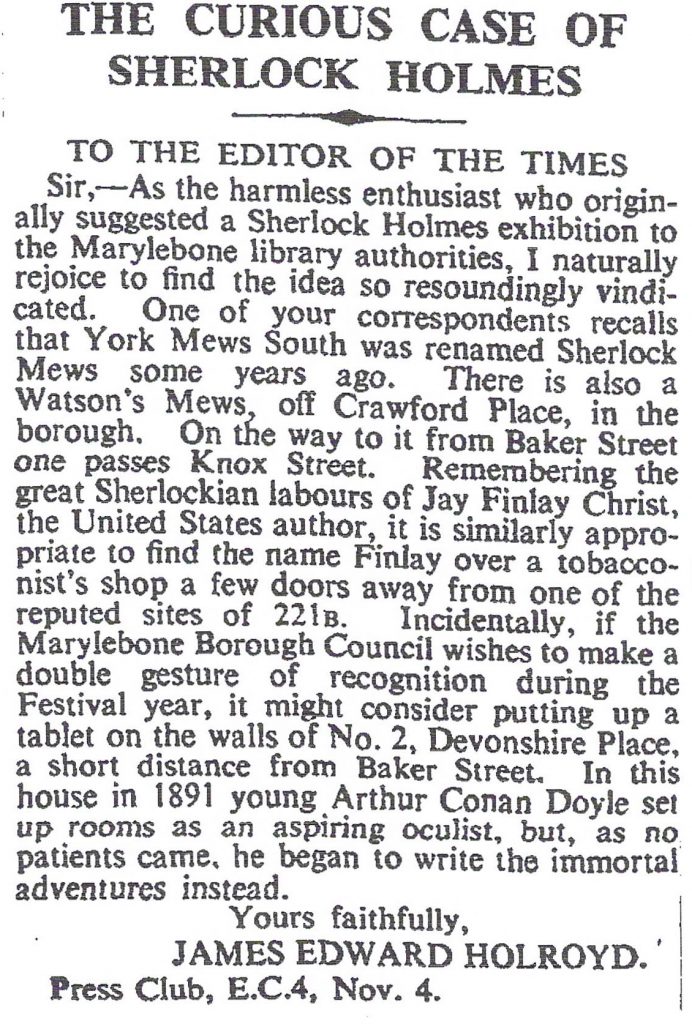
This apparently provoked a good deal of interest with Councillor Sharp who invited Dr Watson to a meeting of the library committee the following Tuesday. Sharp informed Dr Watson that no final decision had been made and asked if any of Holmes personal effects might form the basis of just such an exhibition and indicated that he (Councillor Sharp) might have been one of Holmes’ clients and that he already possessed one of his violins!
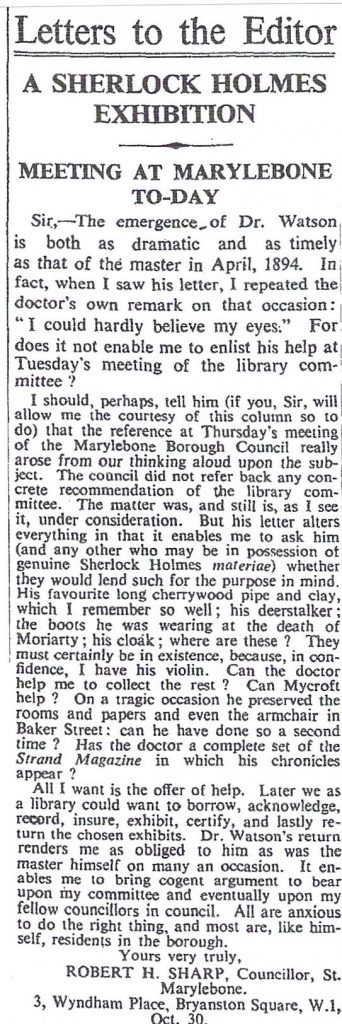
Councillor Vernon says he supported the idea of giving Holmes his appropriate place as an illustrious former resident of the borough, and a letter from an Ivor Back suggests that Vernon “spoke so slightingly” of Holmes. Ivor Back even suggested that Dr Watson should try to persuade Holmes to open the exhibition which the doctor thought was about as likely as the life-size statue of Silver Blaze that Ivor Back had suggested.
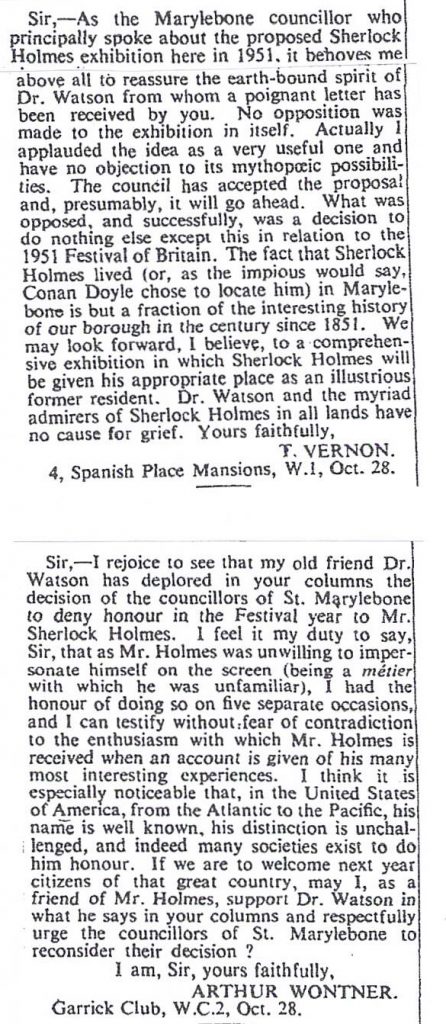
Arthur Wontner, one of the actors who played Holmes at the cinema also added his support and Mycroft got involved but only to point out that he thought Dr Watson’s memory was failing.
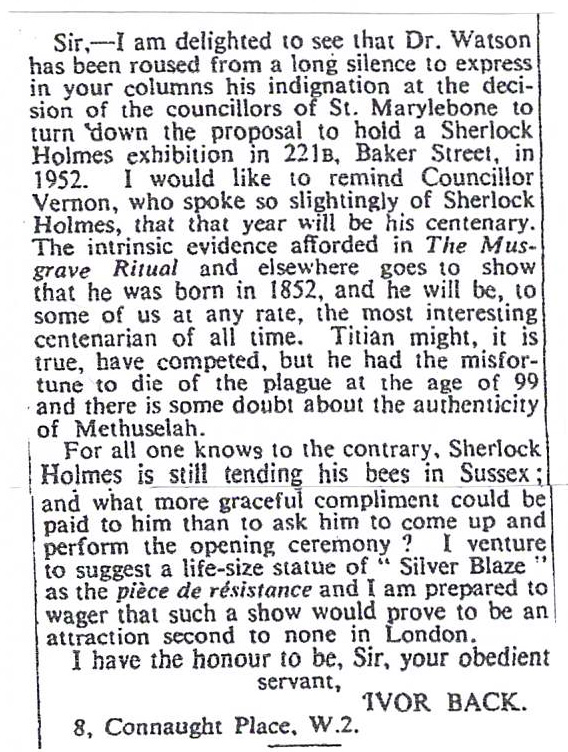
One of Holmes’ former clients wrote to say that she thought that Dr Watson’s letter was a forgery as she believed that Dr Watson’s first name was James and a colleague of Dr Watson’s also added support.
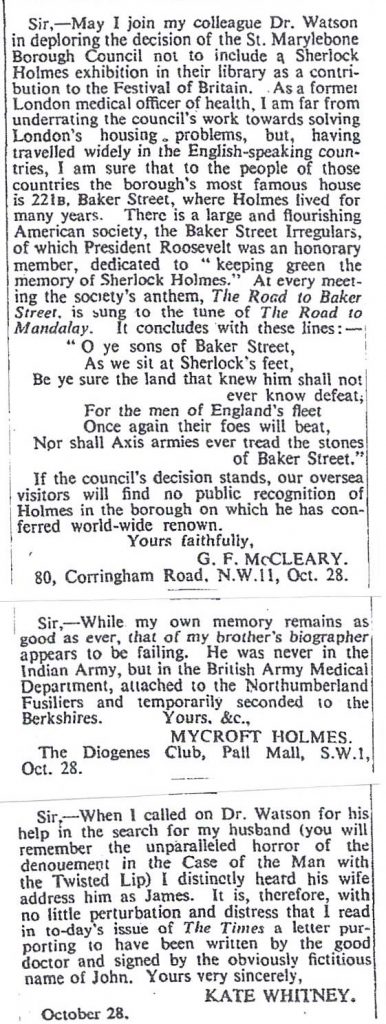
The following day, Mrs Hudson also wrote to The Times castigating Madame Tussaud’s round the corner from 221B for not having the pair’s effigies amongst its exhibits.

In a letter to The Times on November 4th, Oscar Meunier, who made the bust of Holmes that was used to trap Sebastian Moran, and was, by then, living in London, stated that Holmes had asked him to ensure that no likeness of either of us or any of those he brought to justice should be perpetrated by waxen images.
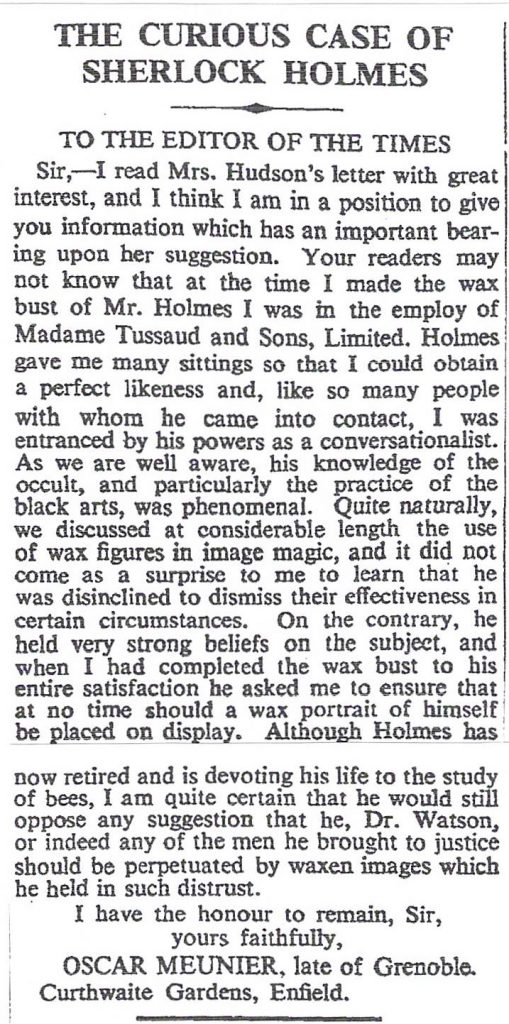
Nevertheless Dr Watson conveyed the good news about the exhibition to Holmes personally that day along with the copies of the cuttings from The Times that are included here. According to Dr Watson’s notes, Holmes was touched by this tribute but alas many of the relics of their cases that many hoped would form part of the exhibition were destroyed in that mysterious and disastrous fire shortly after the end of the war.
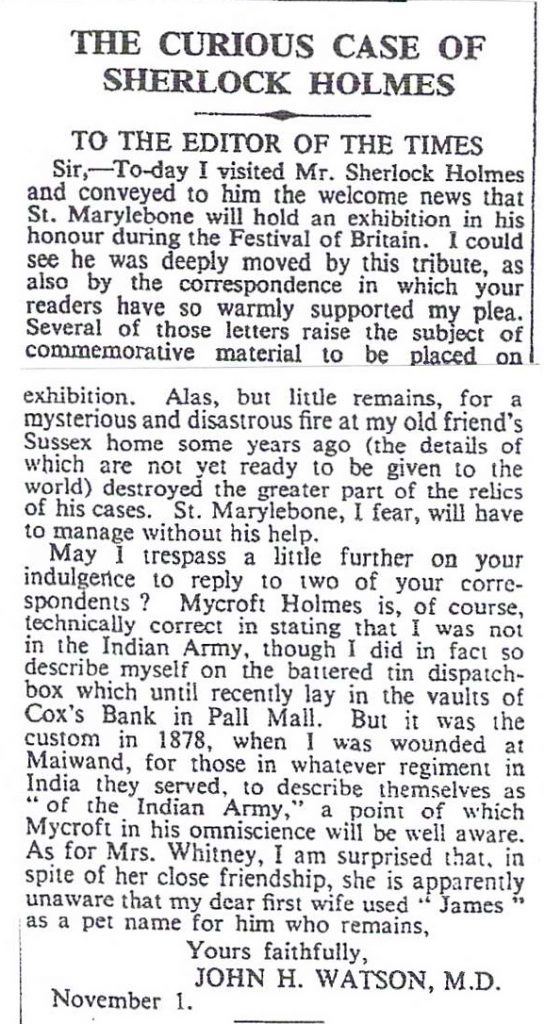
In reporting in The Times that Holmes had warmed to the idea, Dr Watson also replied to Mycroft and Kate Whitney. He states that he was surprised to see that Lestrade had added his voice to the chorus of approval though careful reading indicates that Lestrade may have just been trying to get his own back.
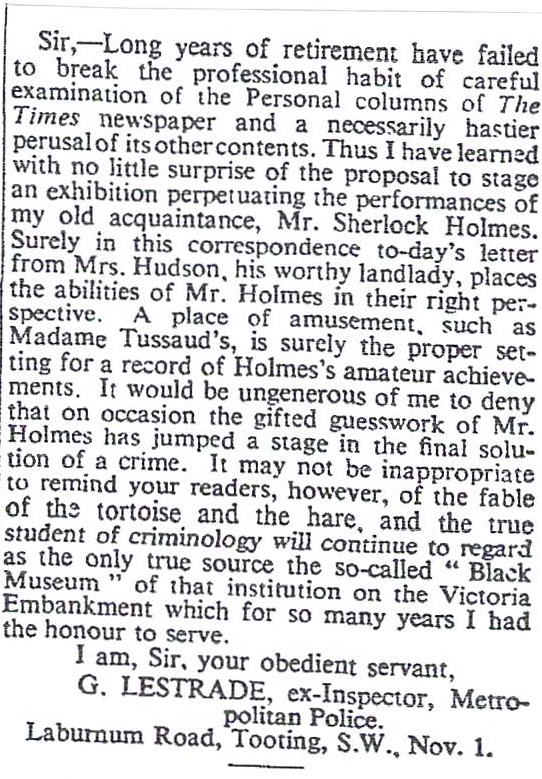
The Times editorial of November 7th sums the whole story up rather well and adds that should the Marylebone councillors feel in the future that they are “getting a little over-confident” in their powers that someone should kindly whisper “Baker Street” in their ears in a similar way to how Holmes asked Dr Watson to whisper “Norbury” in his!
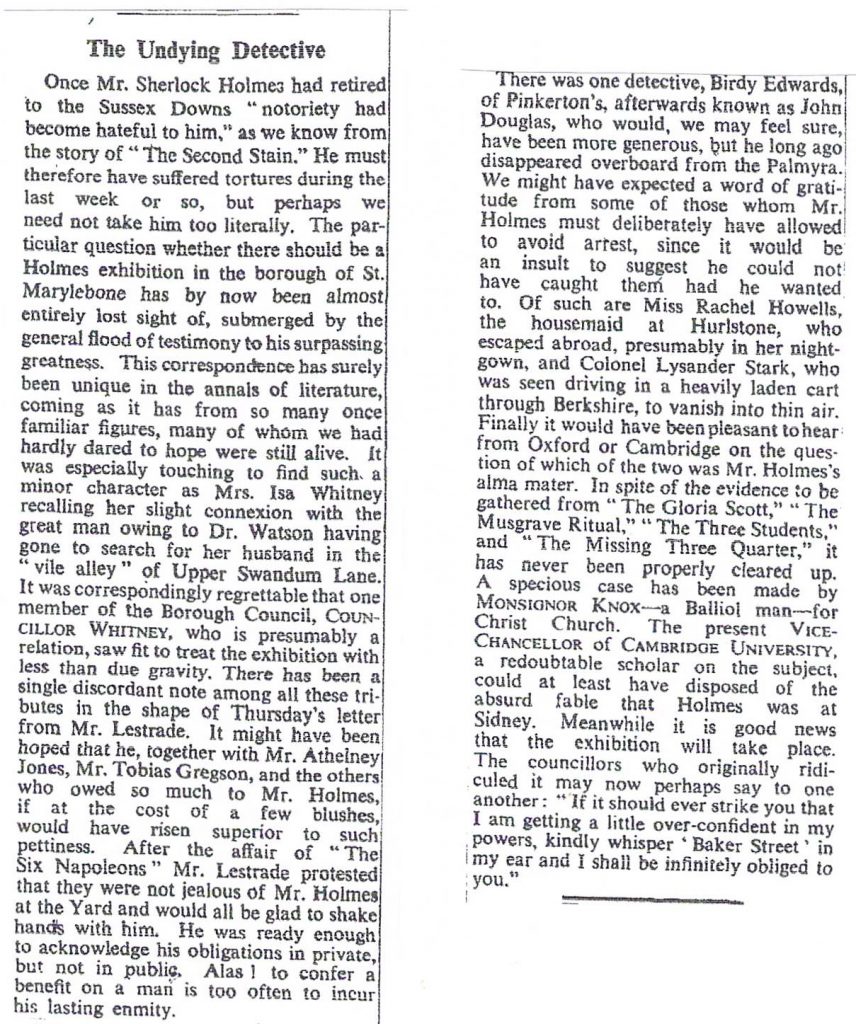
But the final word is with Dame Jean Conan Doyle, Arthur Conan Doyle’s daughter, who offered to provide much material for the exhibition.
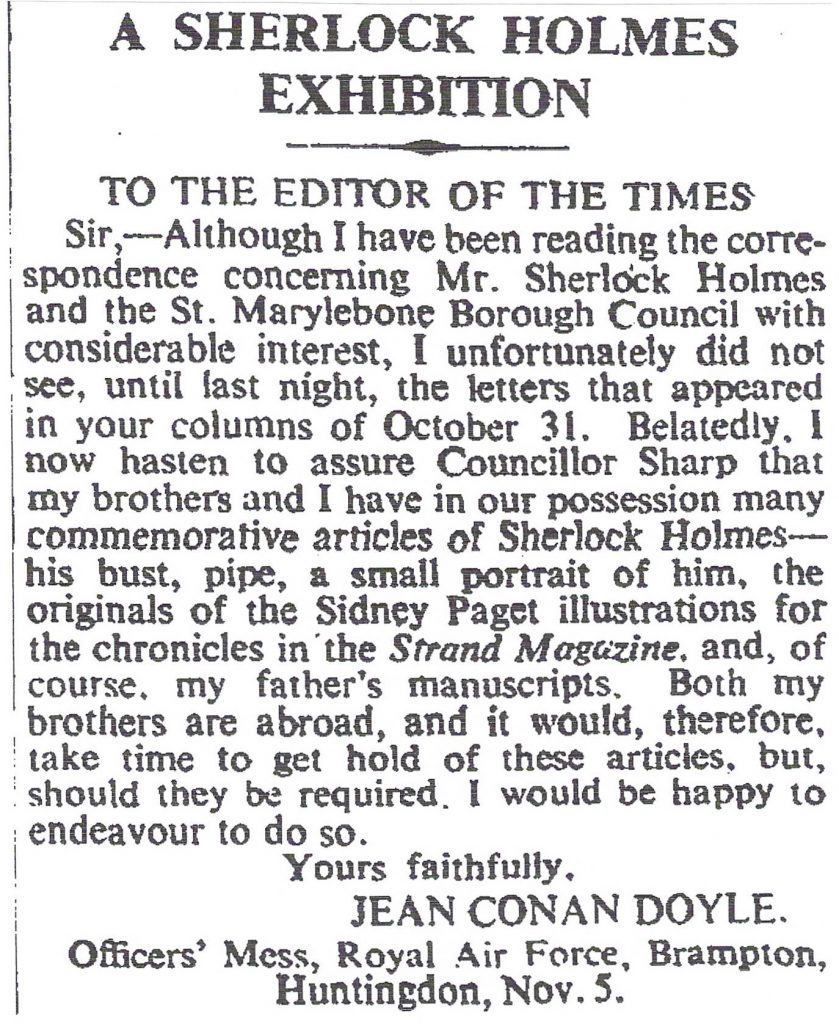
Be First to Comment